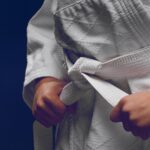In the dynamic world of self-defense, Krav Maga emerges as a beacon of adaptability and practical wisdom.
Designed to prepare individuals for a range of threats, its philosophy champions simplicity, leveraging instinctive responses, and the formatting of a system with the capacity to allow Kravists to respond under pressure. Yet, this revered system faces questions, notably the misinterpretation and modification of its core principles and philosophy by some instructors. Such deviations not only obscure the true ethos of Krav Maga but also potentially compromise the safety and effectiveness of the system for students.
Core Principles: The Foundation of Krav MagaKrav Maga’s essence is distilled into its reliance on a concise set of principles and motor skills, adaptable to an array of defensive scenarios. This design principle ensures that practitioners can defend themselves across vast and various situations, while leveraging instinctive responses when applicable to neutralize threats efficiently. The system eschews complexity for the sake of broad applicability, prioritizing quick, decisive action over a cumbersome catalog of responses. This streamlined approach minimizes hesitation and maximizes effectiveness, embodying the philosophy that simplicity is the ultimate sophistication in self-defense.
The Dilemma of Misguided EvolutionThe integrity of Krav Maga is sometimes threatened by instructors who, intending to evolve the system, dilute its effectiveness. Incorporating techniques from disparate martial arts—such as adopting Sambo wrestling postures for edged weapon defenses—will lead to a misalignment with Krav Maga’s foundational principles. Such so-called innovations often result in a muddled curriculum that sacrifices the system’s designed intuitiveness and safety. The problem is twofold: not only does this “evolution” stray from Krav Maga’s core tenets, but it also risks instilling practitioners with a false sense of security, potentially endangering them in real-world confrontations.
Instructors as Custodians of TraditionInstructors wield immense influence over the preservation and transmission of Krav Maga’s legacy. Their role extends beyond teaching techniques; they are the stewards of the system’s philosophy and integrity. When instructors misunderstand or intentionally alter Krav Maga to include incongruent techniques, they erode the system’s foundation, leading students astray. It is imperative, then, that instructors commit to a rigorous understanding of Krav Maga, ensuring that their teachings reflect the system’s objectives: to provide an effective, adaptable, and safe means of self-defense that respects and leverages human instincts and capabilities.
Evaluating Krav Maga: A Holistic PerspectiveAssessing the efficacy of Krav Maga transcends the critique of isolated defenses – this is key. Rather, it involves a holistic understanding of its approach to self-defense, recognizing that mastery lies in the ability to internalize and apply a conceptual framework rather than memorize an exhaustive list of mismatched movements. This paradigm shift in evaluation is crucial for both practitioners and critics, emphasizing the importance of adaptability, instinctive response, and practicality in real-world defensive scenarios.
Fostering a Culture of Authenticity and RespectAs the Krav Maga community navigates its path forward, it must embrace a culture that values authenticity, respect for thought-tradition, and openness to constructive evolution by applying the core philosophy. This kind of culture requires a collective effort to deepen the understanding of Krav Maga’s principles, ensuring that any adaptations or innovations align with its foundational goals. By doing so, Krav Maga will continue to serve as a powerful, effective defense system, true to its origins and responsive to the evolving needs of those it seeks to protect.
Conclusion: The Genius of Simplicity in Krav MagaThe true genius of Krav Maga lies in its simplicity and the application of universal principles to create an optimized system of defense. This system is designed to enhance the safety of its practitioners across a wide spectrum of potential dangers, embodying a philosophy where adaptability and instinctive response are paramount. Those who seek to over-specialize or optimize individual defenses fundamentally misunderstand the essence of Krav Maga. In their pursuit of perfection, they amass a disparate collection of techniques that, while individually might appear effective, fail to cohere into a system that can be reliably called upon under stress. This approach not only undermines the foundational principles of Krav Maga but also jeopardizes the safety it seeks to secure.
By adhering to the simplicity and adaptability that form the bedrock of Krav Maga, instructors and practitioners alike can maintain a system of self-defense that is both effective and true to its origins. It is in the disciplined restraint from unnecessary complexity that Krav Maga finds its strength, offering a pragmatic, reliable means of protection that stands the test of real-world application. As the Krav Maga community looks to the future, it must guard against the allure of misguided innovation, preserving the system’s integrity and ensuring its continued relevance and efficacy in the science of self-defense.
Bottom line for effective self defense…avoid optimizing each and every defense (that’s why some systems have thousands of inaccessible defenses/techniques that simply cannot be sorted through under the stress of a violent attack), instead optimize your self defense system.





Scott Mather
Terrific advice! May it be spread far and wide.
Etti Clingman
Well said. Great article.